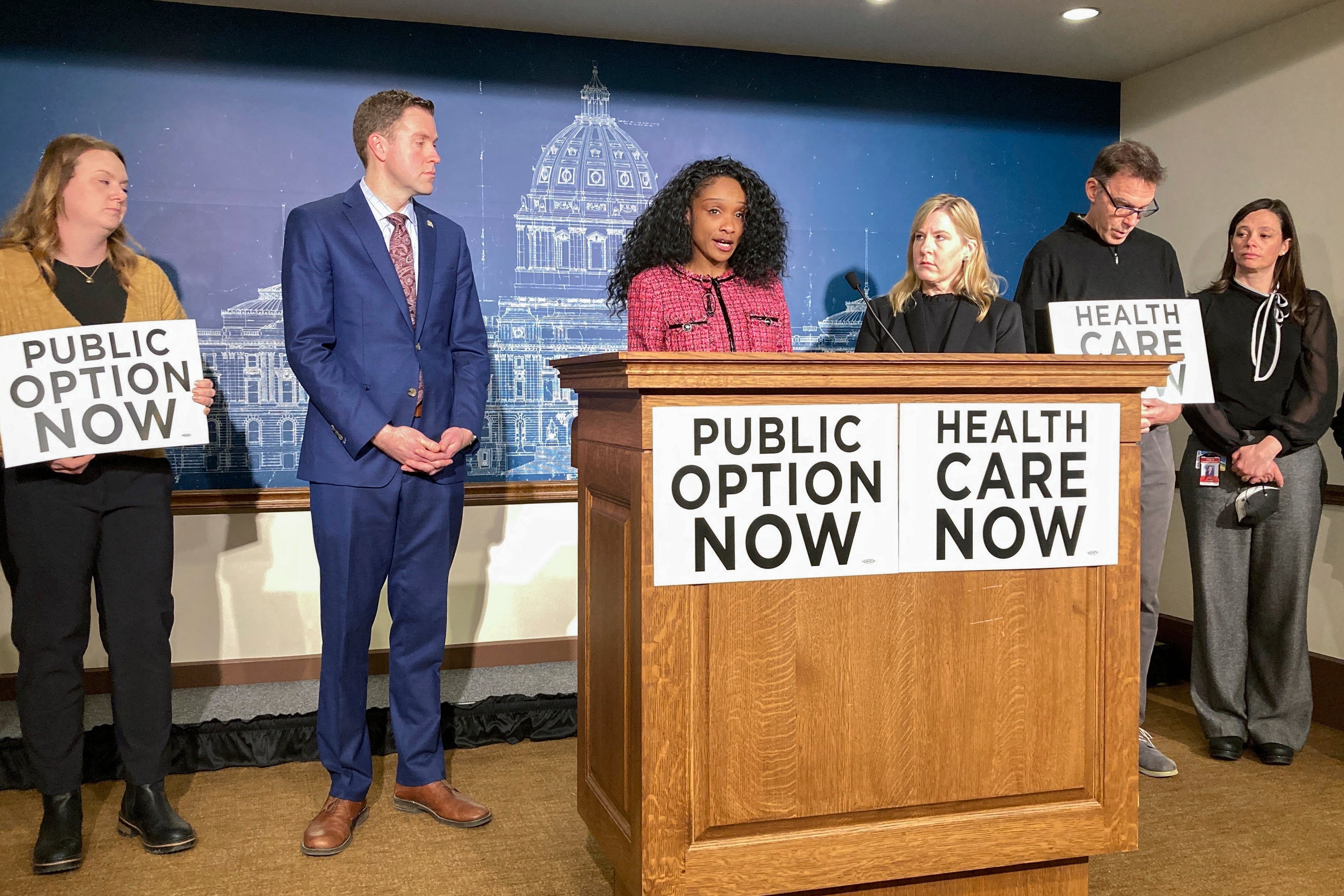ST. PAUL — Lawmakers went to work Wednesday on a proposal to allow all residents to buy into the state-run MinnesotaCare health insurance program, not just low-income workers struggling to get by.
Democratic legislators and Gov. Tim Walz have been pushing for several years to expand MinnesotaCare into a low-cost “public option” for health insurance that would be available to everyone. Now that Democrats control both chambers of the Legislature and the governor’s office, expanding the program is one of their top priorities for the 2023 session.
MinnesotaCare, which dates back to 1992, is aimed at lower-income people who don’t qualify for Medicaid and don’t otherwise have access to affordable coverage. The bill, which got its first hearing Wednesday, would eliminate the current income cutoff of 200% of the federal poverty line.
The “public option” is aimed at helping people like home health care worker Tavona Johnson, of Austin, whose husband was diagnosed with advanced colon cancer in 2020. As a small-business owner, she said, he didn’t have good insurance options. Then the hospital told them to be prepared to pay up-front costs of $14,000 for each chemotherapy treatment if they didn’t find coverage.
Johnson said at a news conference that they were finally able to find a plan through the state-run MNsure health insurance exchange, but the premiums were “astronomical” at upwards of $1,300 a month, with “obscenely high” deductibles and no coverage for prescription drugs or co-payments.
“We had to drain his retirement fund just to stay afloat. And we did that for a year. We had no choice,” she said. “My husband had to have this lifesaving treatment. I couldn’t just let him die.”
Her husband passed away just over a month ago.
“The money that he saved and planned to use for us to retire together is gone. We had to use it to cover those medical costs,” she said. “The money intended for me to survive on after he was gone is no more.”
As of last July, nearly 108,000 Minnesotans were enrolled in MinnesotaCare. The bill’s chief author, House Majority Leader Jamie Long, of Minneapolis, told reporters before the hearing that he didn’t know how many more people would take advantage of an expanded option to enroll, nor did he have figures on how much money the change would cost the state.
The administration of former Gov. Mark Dayton estimated in 2017 that removing the income cap could double enrollment in MinnesotaCare. Walz’s proposed budget for fiscal year 2024-25 includes nearly $21 million for expanding the program.
Officials from business and insurance groups told the House commerce committee that they were concerned about the impacts on struggling hospitals in rural areas, given that payments from public programs are often far below what commercial insurance plans pay and don’t cover the full costs of care. Those commercial plans, in effect, help subsidize patients on public plans. And those officials expressed fear that patients would switch from commercial plans to MinnesotaCare, introducing further imbalances into the system.
Rep. Tim O’Driscoll, of Sartell, the lead Republican on the committee, urged his colleagues to “slow this down,” adding, “we have a lot of unanswered questions.”
The panel decided on a voice vote to send the bill to the next of what are expected to be several committee stops.
The federal government currently picks up most of the costs of MinnesotaCare. The state’s share is funded by taxes on health care providers and insurers, plus premiums that currently range from as low as $4 per month per person to $80. Coverage is free to those under age 21. The income cutoffs now are $29,160 for an individual or $60,000 for a family of four.
Under the proposed expansion, premiums would be on a sliding scale that the state would develop later. The state would also develop an option for businesses with under 50 employees to participate.
The change would take effect in 2026, assuming the federal government approves, and eligibility would no longer depend on immigration status. During the transition, the bill would raise state subsidies for “gold” plans purchased through the MNsure exchange for 2024 and 2025.






